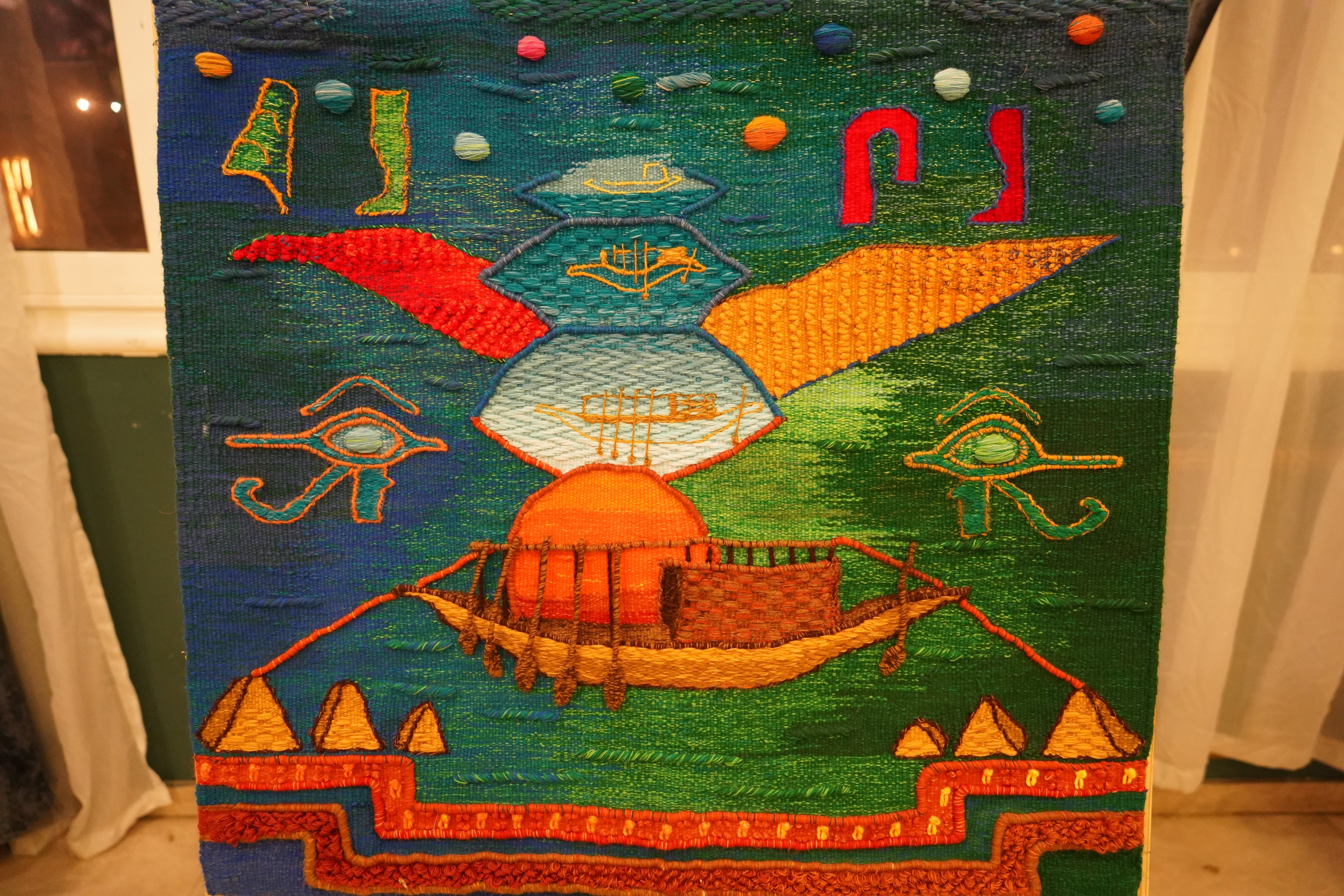
Sun Boats
Artist / Maria Cristina Ríos Íñiguez.. Argentina (2025)Fine Textile Arts. Weaving is an ancient craft that has evolved into a contemporary art form, relying on the interweaving of threads to create designs and colors. It can be used to express multi-colored linear artwork. Of course! This is a wonderful textile artwork, seemingly inspired by ancient Egyptian civilization and the legend of the sun boats. Here is a brief description and explanation of the piece: Description of the artwork: This piece is a textile, characterized by its rich and varied colors, dominated by shades of blue, emerald green, golden yellow, and crimson red. The technique used is the art of weaving, in which intertwined threads create a surface with a unique texture and fine details. The painting includes a set of symbols and elements inspired by ancient Egypt, skillfully woven: In the center: A traditional sun boat appears, possibly representing the boat of Ra, the ancient Egyptian sun god. Details of the boat's hull and the sails or wings that propel it can be seen. The Sun: Above the boat appears the orange or gold sun disc, a major symbol of sun worship in ancient Egypt. The Eyes of Horus (Udjat): Two large, distinctive eyes appear, symbols of protection, royal authority, and good health in Egyptian culture. They are usually depicted facing each other on either side of a boat or in other prominent locations. Pyramids: At the bottom of the painting are triangular shapes representing the famous pyramids, royal tombs, and other great architectural monuments of ancient Egypt. Symbols and Hieroglyphs: The painting may include some woven hieroglyphic inscriptions, which may carry religious or royal meanings or relate to the sun's journey. Decorative Elements: The design is interspersed with various decorative elements in simplified geometric or floral shapes, a characteristic of ancient Egyptian art. A brief explanation of the painting, inspired by solar boats and the artist's love of Egypt: Argentine artist Maria Cristina Ríos Íñiguez appears to have been inspired by her passion for ancient Egypt, particularly the myth of the solar boats. This myth revolves around the sun god Ra's daily journey across the sky on a dayboat, followed by his nightly journey to the underworld on a nightboat. Expressing Love for Egypt: By using iconic Egyptian symbols such as the pyramids, the Eye of Horus, the sun, and the solar boat, the artist expresses her deep appreciation for ancient Egyptian civilization and its rich history. Depicting the Myth of the Solar Boat: The painting artistically captures the concept of the sun's journey, a fundamental belief in ancient Egyptian religion. The solar boat represents the means of transportation of the god Ra and the cycle of life, death, and rebirth. Fusing Art and Culture: The artist combines weaving as an expressive technique with cultural and historical elements from another civilization, creating a unique artwork that expresses appreciation and impact. Dedication to the Solar Boat Exhibition: The production of this painting specifically for the Solar Boat Exhibition demonstrates the artist's special interest in this aspect of Egyptian civilization and her desire to contribute to its celebration through her art. Overall, this textile is a beautiful and expressive work of art, blending weaving skill with cultural and historical inspiration drawn from ancient Egypt and the myth of the solar boat, reflecting the artist's love for this great civilization. https://www.youtube.com/@sunboatsexhibitions4049
| Artist | Artist / Maria Cristina Ríos Íñiguez.. Argentina |
| Year | 2025 |
| Location | Maniya Egypt |
| Material | Textile |
| Accession Number | N/A |
| Dimensions | 100/100 |
| Credit | Sun Boats Collection |